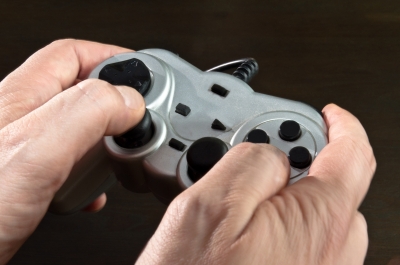
What Teen Video Game Addictions Looks Like
Are you struggling with how to manage how much time your teen spends playing video games? You’re not alone. Many teens completely lose track of time while playing video games that are intense, competitive, and seriously addictive. Before you know it, they’re skipping sleep, avoiding exercise, socializing only through a headset, and their grades are tanking. So, what do you do about a teen video game addiction?
What To Do About Teen Video Game Addiction
You might be feeling frustrated, disconnected, and even helpless. You miss spending time with your kid, and now it feels like all they care about is getting back to their Xbox, PlayStation, or computer. It’s driving you up the wall, and it’s also pretty scary.
Possible Consequences of Teen Video Game Addiction
Teen video game addiction isn’t just about too much screen time. It can lead to emotional disconnection, physical health problems, and stunted development. These are serious issues, and the more aware you are of the risks, the more motivated you’ll be to set strong boundaries.
Step 1: Remember That You’re Still the Parent
Before making changes, remind yourself: you’re the parent. You don’t need to yell or be harsh, but you do get to set the rules in your house. You’re paying for the internet, electricity, and even the Xbox, and it’s your right to set limits. Once you embrace that, you’ll feel more confident taking the tough but important steps ahead.
Step 2: Reflect on How You’ve Set Loving Limits in the Past
Sit down and think about times you set boundaries out of love. When they were little, maybe you made them hold your hand while crossing the street. Maybe you didn’t allow them to swim in the pool without an adult watching them. These were all moments where you protected and guided them, even if they didn’t like it. It’s the same now. Write down 10 examples of times you set limits to keep them safe. These reminders will help you stay grounded when things get tough.
Step 3: Understand Teen Video Game Addiction Is a Big Deal
Now it’s time to think about the real consequences of teen video game addiction. If your teen plays for 5 hours a day, they’ll miss out on learning important social skills. Write down the risks to remind yourself why limits are necessary. You don’t have to share them with your teen. However, sometimes sharing your reasons is better. It helps them understand why you’re setting gaming limits. Use your best judgment based on your situation.
Step 4: Set Clear Limits and Consequences
Sit down and decide on what limits you want to set. Consider these questions:
- How much screen time is okay each day or week?
- What happens if your teen breaks the rules?
- Are you going to have a “dry-out” period with no video games at all?
If you believe your teen truly has an addiction, it might be time for a complete break from gaming for at least six months. That may sound intense, but just like any addiction, they need space to reset and detox from the habit.
Step 5: Hold the Line
When you’re ready, present the plan to your teen. Expect pushback. You may get anger, tears, or even insults. Stay calm. Be kind, but firm. Show empathy—after all, they’re losing their favorite activity and their way to talk to online friends. But don’t waver. This is not a negotiation. This is a safety intervention. You’re the parent, and this is your house.
Don’t Give Up
This process isn’t easy. Addressing teen video game addiction can be tough, especially when your teen looks fine sitting at home. But the risks—like social isolation, inactivity, and emotional stagnation—are very real. Stay strong. Be consistent and loving. Most teens eventually see what they were missing and appreciate your support. Parenting with love means doing what’s best, even if you’re not always liked.
Helping teens grow and families improve connection,
Lauren Goodman, MS, MFT



